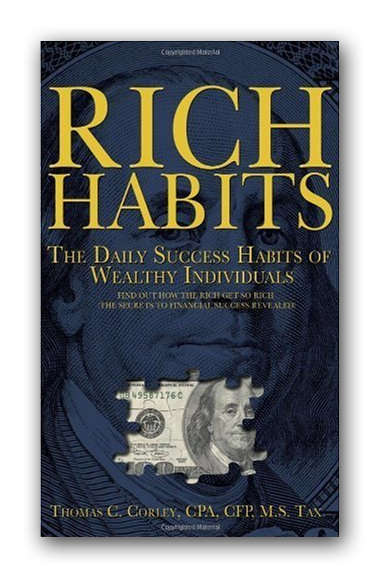
Did you know that you put your pants on the same way every day? The same left or right leg goes in first. The same thing with your shoes. You put the same left or right foot into the first shoe you put on.
Habits are unconscious thoughts, behaviors or emotions that exist for one purpose – to free up your conscious brain, so you can think.
Did you know that every day many of you engage in some habits that are actually dangerous?
You wake up in the morning and the first thing you do is reach for a bagel to butter to eat with your coffee. Or, right after dinner, without thinking, you spend hours sitting on the couch, watching TV.
Dangerous Habits take time to impair your health, your finances, your job, or your relationships. The effects of Dangerous Habits take many years before they negatively affect your life.
Awareness is the key to putting an end to dangerous habits. That is why in my books, Rich Habits and Change Your Habits Change Your Life, I highlight the importance of spending three days writing down all of your behaviors, thinking and emotions. You need three days in order to see a pattern that occurs during different times of the day. That repetition = a habit.
Only when you make yourself consciously aware of your dangerous habits, by seeing them on paper, can you put an end to them.
What are some Dangerous Habits?
- Eating junk food every day (cancer, heart disease, cardiovascular disease, diabetes, neurological disorders).
- Watching TV for hours a day, while sitting on a couch (cardiovascular disease, heart disease).
- Sitting for hours while engaged in social media or while on the Internet (cardiovascular disease, heart disease).
- Drinking too much alcohol (cancer, neurological disorders).
- Spontaneous spending (poverty).
- Speeding in your car during your morning commute to work (car accident).
- Using your cell phone while driving your car (car accident).
- Constant worrying (chronic stress which leads to cancer and other diseases).
- Anger or other uncontrolled toxic emotions (destroys relationships).
- Gossip (destroys relationships).
- Smoking cigarettes (lung cancer, heart disease).
- Arguing, fighting with others (destroys relationships or can lead to divorce).
- Sarcasm or making fun of others (destroys relationships).
- Procrastination (leads to poor work product and loss of trust).
- Taking drugs (can lead to addiction which damages health).
- Gambling (poverty).
- Lifestyle creep (no savings or creates excessive debt, which can lead to poverty).
- Living beyond your means (no savings or creates excessive debt, which can lead to poverty).
- Hate (chronic stress, which impairs health).
- Using credit cards (poverty).
- Not reading to learn (lack of knowledge, which impairs job performance).
- No life insurance (puts family at risk of poverty, if you die).
- Infidelity (divorce, which can lead to poverty).
Become aware of your habits. Eliminate Dangerous Habits. Then, live long and prosper.







